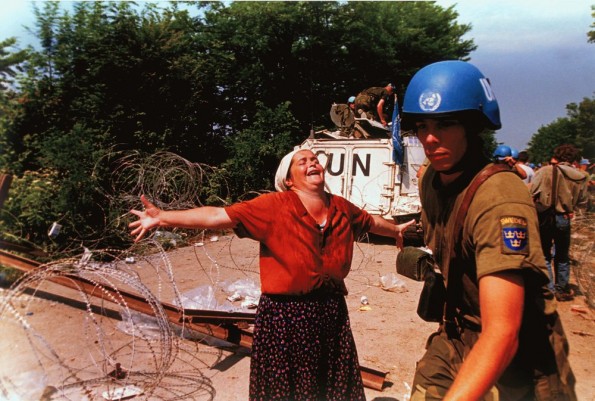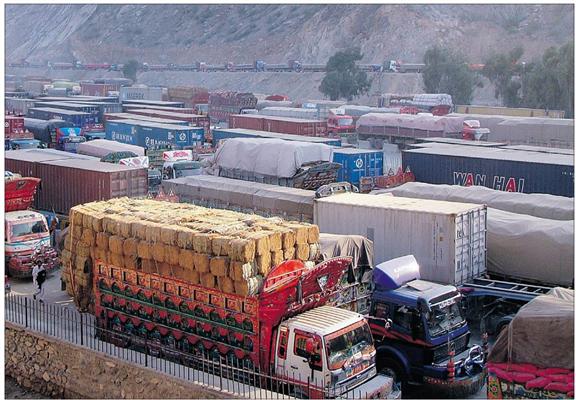By: Pavle Levkovic
Another month, another attack on NATO. The most recent show of force against the Alliance came on January 26th as a car, heavily packed with explosives, detonated in Lashkar Gah, the capital of Helmand province. A suicide bomber targeted a UK Provincial Reconstruction Team (PRT), wounding three of its members along with 28 civilians. Four Afghan nationals lost their lives.
This particular bombing was overshadowed by a more controversial incident that took place one week earlier. On January 20th, an Afghan National Army (ANA) trainee fired on and killed four French soldiers in Kapisa Province. The deaths hit a political nerve in France, which is helping train local security forces as part of the NATO-led International Security Assistance Force (ISAF). A few days after the incident, French President Nicolas Sarkozy declared that France’s 3 900-strong contingent would withdraw from Afghanistan in 2013, a year earlier than planned.

Attacks in which Afghanistan’s own security forces have turned against NATO service members have become increasingly common. Just 10 days before the death of the French soldiers, an ANA soldier turned his weapons on American servicemen and succeeded in killing one before they could respond. In December, two French Foreign Legion troops died in a similar manner. And in April 2011, an Afghan Air Force pilot, who had served for over 30 years, killed eight American soldiers at a routine meeting, the same month that a suicide bomber in an ANA uniform killed five NATO troops.
A leaked media report on incidents involving the Afghan National Security Forces (ANSF) and NATO found that 26 such attacks occurred between May 2007 and May 2011, leading to 58 deaths. Senior NATO officials rejected the report, calling it misleading and “unprofessional,” but its overall implications should not be dismissed. Though the deaths account for only six percent of total ISAF casualties, the report suggests that the attacks underscore a deeper trend in which mistrust between NATO and the ANSF is steadily growing.
Save the date: 2013
In the larger context, attacks on NATO by Afghan security forces appear to serve as political ammunition. NATO members seem to be capitalizing on recent headlines coming out of Afghanistan as they position themselves to pull out of the country even earlier than the originally planned 2014 deadline.
After dropping hints in the aftermath of the January 20th attack, France announced on January 27th that it would unilaterally bring its troops home ahead of schedule. French President Sarkozy also said that he would be asking NATO to end the mission early and hand over security duties to the ANSF by the end of 2013.

Although the French government claims that the deaths are not the official reason for the early withdrawal, the timing of the decision has proven divisive in view of the continuing instability in the country. The media responded with accusations that the withdrawal was a calculated move by President Sarkozy designed to win support over his main challenger, François Hollande, ahead of the upcoming presidential elections. Critics also panned the decision as ‘running for the exit,’ and feared that it would set off a wave of such early withdrawals.
That prediction was strangely accurate, as on February 1st, US Secretary of Defense Leon Panetta suggested that his country would also be considering an earlier handover date sometime in mid-2013. The result was a media flurry, requiring both NATO Secretary General Anders Fogh Rasmussen and Secretary Panetta to clarify their remarks. While mid-2013 was indeed the new date, this would only represent the point at which US troops intended to transition mainly from a combat role to a support role. The NATO Secretary General reaffirmed that ISAF troops would remain “operationally ready” and would, in some cases, still fight alongside their Afghan partners. Overall, the new 2013 date was apparently “exactly in line with” with the original plan to have the ANSF take over the bulk of combat duties, according to CIA Director David Petraeus.
The question of money
In operational terms, an early withdrawal by French troops is not necessarily critical considering the relatively small size of the training group and the fact that it was all but confined to Kapisa Province, near Kabul. However, given that the US contributes the largest numbers to ISAF—approximately 90 000 service members—it is clear that as long as cooperation between them and the ANSF is strained, efforts to train and bring up domestic security forces to an acceptable level of readiness will be difficult. This could have the effect of producing an ineffective force unable to deal with day-to-day security threats, let alone with a major insurgency by the Taliban or their allies. Though military advisors claim that the ANSF already lead 40 percent of all combat operations, it is not clear if this will translate to future success. At the moment, the ANSF would be hard-pressed to carry out significant combat operations without the support of NATO, especially its US component. This limitation was a concern for the original 2014 deadline, and is now even more pressing in view of the fast-approaching 2013 handover.
If the violent situation continues, the friction between NATO and the ANSF will likely impact the outcome of Afghanistan in three areas. These include the likelihood of successfully handing over security duties to the ANSF, future funding by NATO countries, and managing the insurgency. It is important to note that all three are strategically linked, such that setbacks in one area will most likely require increased efforts for the other two to prevent a destabilized Afghanistan.
The Government of the Islamic Republic of Afghanistan (GIRoA) and individual members of NATO all have a stake in the outcome of the stabilization mission. The ANSF is the military and police arm of the GIRoA, and while it often pursues its own agenda, in the long-term it is dependent on the stability of the government. The final key player is the Taliban, which opposes both groups and will attempt to reassert itself in the country unless it is militarily defeated — which shows no signs of happening — or brought into the political discussion.
In the event that the ANSF cannot effectively control the country by itself, there are very few options available. One is to increase funding in the hope that more money will translate into better troops. The ANA in particular is notorious for its high rate of desertion, with up to 25 percent of its recruits withering away after a single year. The reality is that many of them simply melt back into the local population when they grow tired of fighting. Many Afghans also volunteer in order to collect a quick paycheck, skipping out in time to make it back home for the farming season. A better-paid army might be more loyal to the government in Kabul.
Yet increasing funding is unlikely because military budgets across the board are on the chopping block. NATO is facing a budget shortfall as a result of the continuing economic sluggishness of Europe, and the most recent announcement that the US is slashing two NATO brigades overseas is not encouraging.
Abdul Rahim Wardak, the Afghan Defense Minister, has suggested that costs to fund the ANSF long-term would be in the region of $4-6 billion. But a figure of $7 billion has also been quoted elsewhere, and it is reasonable to think these estimates will be revised even higher if insurgents step up their attacks. It is likely that the final figures will result in a reduced number of Afghan security forces — 250 000 instead of the more optimistic 350 000 — following the 2012 NATO Summit in Chicago, May 20-21.
If so, the third option on the table, which might forestall a security crisis, requires minimizing the potential threat on the insurgent side. Though the talks are only in the ‘confidence building’ stage, the US has already made overtures to the Taliban leadership through a planned office in Qatar. Though it is not the only organization hostile to the central government — there are dozens of tribes, warlords, and other regional actors resisting the leadership in Kabul — the Taliban is by far the most powerful and best organized. This is the most delicate part of any future settlement in Afghanistan and remains the most difficult to gauge at present. It also presents the biggest risk, since a renewed Taliban state would be more than just a public relations setback. Observers fear that a fundamentalist Afghanistan would once again harbour terror groups and pose a threat to Alliance members as it did before 9/11.
What an ‘early exit’ would mean for Afghanistan
With the French decision to withdraw ahead of schedule, it is clear that at least some NATO members are looking for any excuse to distance themselves from a mission whose future is not looking optimistic. The big concern is that the ANSF will fail to ensure security as it is institutionally backward and simply cannot adapt to operating on its own. In that case, more funding will have to be obtained to shore up the government and deter the insurgents. Since Alliance members are wary of throwing good money after bad, this is likely to be the key sticking point in future negotiations.

For this reason an ‘early exit’ should not just be thought of in terms of the withdrawal date. Rather, it is shorthand for a situation in which the ANSF is unprepared to assume security duties, insurgents are likely to destabilize the government in Kabul, and Alliance members try to figure out how to avoid getting locked into providing huge sums of money to keep the government afloat.
While all major contributors to ISAF have pledged to support Kabul following the withdrawal, it is likely they will not deliver on their promises in full. The reality is that the global economy is stressed, military budgets are tightening, and the war is highly unpopular in Europe. The Anglosphere nations — the US, the UK, and Canada — may continue to deliver as they are shielded from the Eurozone crisis. The US in particular will continue to have a major strategic interest in the region. Afghanistan shares a border with both Iran and Pakistan, two countries with which US relations continue to deteriorate and remain highly sensitive.
For the moment, Italy, France and the UK have concluded agreements to support the Afghan government for the “long-term” after the 2014 date. France specifically has pledged two decades of support even as it is loath to commit its own troops. But if the Kabul government goes down, then these agreements will also vanish. The real question then becomes one of commitment: will NATO members stay the course in Afghanistan? Or will they capitalize on recent events and excuse themselves from the war?
Disclaimer: Any views or opinions expressed in this article are solely those of the authors and the news agencies and do not necessarily represent those of the NATO Council of Canada. This article is published for information purposes only.


